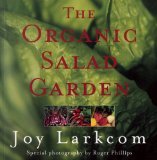

Broccoli is closely related to cabbage, cauliflower, and Brussels sprouts and, like these other members of the Brassica genus, requires a fertile soil with good moisture-holding capacity or irrigation. Broccoli, like all related brassicas, is considered a Heavy feeder, so before planting, be sure to add organic compost to your garden soil.
If clubroot is a problem, raise the pH by adding lime. pH 6.0-7.5. While more heat-tolerant varieties such as Windsor are being developed, broccoli does not generally do well in hot weather, the best success being with spring and fall crops.
Plant Spacing: Space 15" apart and where planting in rows, make rows 18" apart.
Harvesting Broccoli Harvest when the heads are dark green. Before flower buds open, cut center head. hydrocool or ice as soon as possible. Harvest secondary side shoots regularly to encourage continued production. Irrigate regularly. If heads have turned yellow, you've waited too long. For most varieties, small compact heads offer the best flavor. Harvest the central head first. Some varieties will develop small side shoots; these should last 1-2 months or until frost. Cut the stalk so that several inches remain on the plant.
Storing Broccoli: Store at 32°F (0°C) 10-14 days.
Days to Harvest: Broccoli is a cool-season vegetable that needs from 40 to 90 days to grow to harvestable size depending upon the variety. Broccoli grows best in temperatures ranges from no more than 80°F (27°C) during the day to about 60°F at night. Broccoli is frost hardy and can tolerate temperatures as low as 20°F. Temperatures that are too cold or too warm will cause broccoli to bolt without forming a head. Plant broccoli so that it comes to harvest during cool weather.
Broccoli Companions: artichoke, beet, bush beans, chard, cucumber, lettuce, peas, potato, spinach.
Incompatible Plants with Broccoli: pole beans, strawberry, tomato.

Join "Garden Notes" and plan for Harvest Success as you track and record your gardening progress. Your Free Personal Garden Journal has pages for jotting down notes on the seeds you start, your new plantings, when you fertilized, and even a graph to plot a new garden.

Based entirely on organic gardening principles. This says it all. Joy's book has been fully revised and updated and includes extensive new reading, particularly on oriental and fruiting vegetables, and did I mention, is now entirely based on organic gardening practices. Read More...
